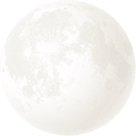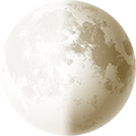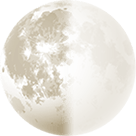What's in the night sky in June (2022)What to see in the June night sky, including Moon phases, supermoon, June Solstice, planet guide, summer milky way and deep space objects M8 lagoon nebula and globular cluster M22.
June Moon Phases
June's full moon was known by early Native American tribes as the Strawberry Moon because it signalled the time of year to gather ripening fruit.
Full Moon and New Moon for June 2022

June 2022 Full MoonThu 1st Jan

June 2022 New MoonWed 1st Jun

June 2022 First QuarterWed 8th Jun

June 2022 Last QuarterTue 21st Jun
Notable Events in June
June 14th's full moon is a Supermoon. This is also the first of three supermoons for 2022. The Moon will be near its closest approach to the Earth and will look slightly larger and brighter than usual.
June 21st is the June Solstice. The June solstice occurs at 09:05 UTC. The North Pole of the Earth will be tilted toward the Sun, which will have reached its northernmost position in the sky and will be directly over the Tropic of Cancer at 23.44 degrees north latitude. This is the first day of summer (summer solstice) in the Northern Hemisphere and the first day of winter (winter solstice) in the Southern Hemisphere.
June Planets
Venus is always brilliant, shining with a steady, silvery light. Mornings in the eastern sky at dawn from early January through to mid-June.
Mars is visible in the night sky from January to mid-July, then shifts to the morning sky from mid-Oct to the end of December.
Saturn is visible in the mornings from late January to early July, and then in the evenings from July to December.
June Deep Space Objects
Summer can be a wonderful time for stargazing and despite the light evenings, there's much to be seen in the night sky at this time of year.
The first stunning summer deep-sky object is the rather large summer Milky Way in Sagittarius, Scutum, Ophiuchus and Aquila. It is a particularly awe-inspiring sight, especially from dark sky sites. To get a good view of it from the UK it is best to travel to a site with a very clear southern horizon.
Nestled within the Milky Way in the constellation of Sagittarius, just above the spout of the Teapot asterism, you'll find the Lagoon Nebula (M8). It's a great object to look at with binoculars and even better in a small telescope.
About 7° to the East of the Lagoon Nebula lies the magnificent globular cluster of M22. You shouldn't have too much trouble picking it out using binoculars, but for a real WOW, try observing it with a large telescope to see it sitting against the glittering starfields of the Galaxy.
There are several other striking summer nebulae in this region of the sky. The Eagle Nebula (M16) and M17 are excellent targets for 6 to 8-inch reflectors; located in Serpens and Sagittarius respectively. Not far away in Scutum lies the Wild Duck Cluster, M11.










